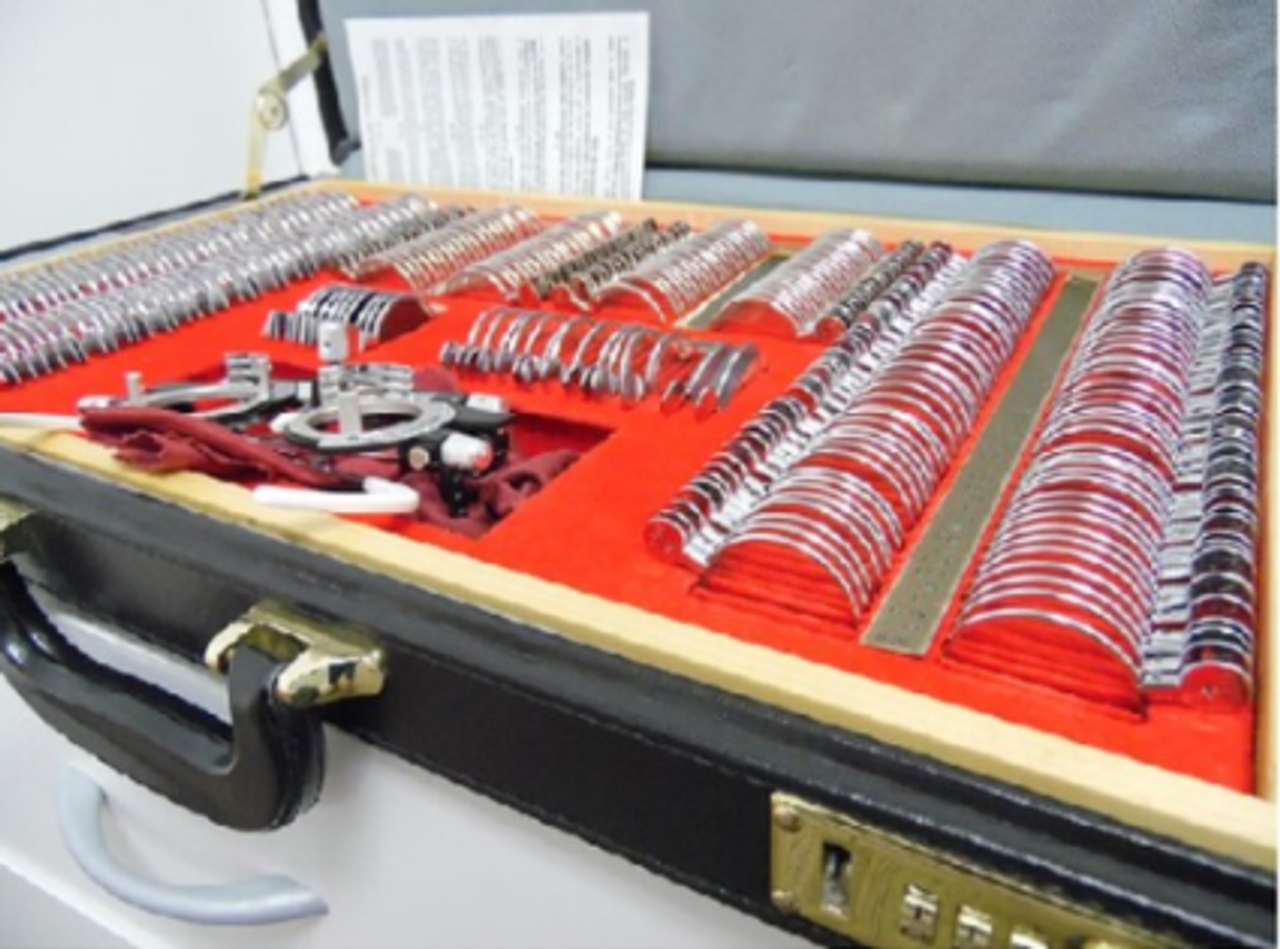What are Diopters?
Shop Prescription Glasses
Diopters are a unit of measurement used to manufacture lenses for glasses. They appear on all prescriptions for glasses help tell the optician what size your finished lenses should be in your finished glasses. First, let's look at measurement.
Measurement of Lenses
Measurement is a very useful concept. Most everything you own is measured in some way by the manufacturer. Examples are feet, inches, pounds, ounces, cups, gallons, shots, numbers and the complete metric system which we don't use . The scientific community long ago adopted the metric system for its ease of conversion between the various units of the system. There was an attempt in the 70s to adopt this system instead of the inch-pound-foot. Baseball tried to help by putting the distances of the ballparks using both systems. The attempt failed, and if you want to see a park with metric measurements, you have to watch soccer. The folks that work in optics settled on a unit of measurement so members of the profession could easily communicate with each other. The units they came up with are called diopters. This unit was named by Johannes Kepler to describe the lenses in Galileo's telescope.
Diopters and Lenses
The scientific definition of a diopter is a measurement of the power of a lens, and it is equal to the reciprocal of the focal length of the lens in meters. So, this is a bit complicated. We need to explain some terms. The focal length, usually measured in meters, is the distance a lens will bend light to meet at a certain point. A lens that focuses light on a wall 1/2 meter in back of the lens has a focal length of 1/2 meter. So, its diopter measurement would be 1/1/2, its inverse or 2 diopters. So, if your prescription is 1.0 diopters, your lenses are working with a focal length of 1/1 or 1 meter. A completely flat lens has a diopter of 0 because it cannot bend light.
Lenses also are able to add together. This means you can combine more than one lens to meet a specific prescription. In the past, people with very high diopter descriptions would often have several lenses combined. This resulted in the very thick glasses that some people wore at the time. Now, lenses are made out of plastic and can be halved or quartered to meet the diopter measurement. Thus, glasses have become, even with several protective coatings very lightweight. Lenses can also be cut into much smaller sizes to make today's glasses that take up much less space on the face.
The Human Eye
The focal length is part of the equation that lens makers use to grind lenses to specification. This is not needed to prescribe glasses, but the lens maker uses these to check if the lens meets the proper specifications. Lenses can also subtract distances, so a concave and a convex lens can be used together to meet a specific diopter. There are two parts of the eye that bend light in the eye, the cornea and the crystalline lens. The eye starts out with the optics to bend light up to 60 diopters. Muscles in the eye change the length of the lens and change the focal length as needed for the best sight. Younger persons can change their diopters up to about 25 diopters. By the time many of us reach fifty, our eyes can only accommodate a change of one to two diopters. Thus, the need for reading glasses at mid-age.
Prescription Swim Goggles – Sports Goggles – Ski Goggles
Leader in Prescription Goggles and Glasses
Kids RX Swim Goggles – Adult RX Swim Goggles – Prescription Sports Goggles - RX Ski Goggles

 Canadian Dollar (CAD)
Canadian Dollar (CAD)
 Euro (EUR)
Euro (EUR)
 British Pound (GBP)
British Pound (GBP)







